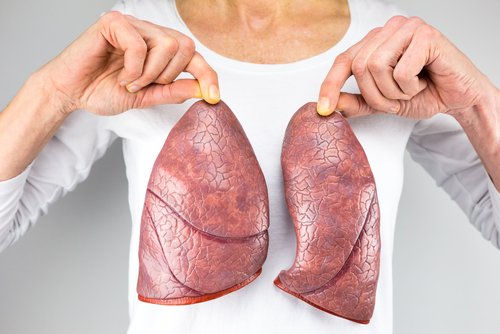INOpulse Nitric-Oxide Dispenser Improves Lung Function in IPF Patients with Pulmonary Hypertension

The INOpulse nitric-oxide dispenser improves respiratory and exercise capacity in patients with difficult-to-treat pulmonary hypertension associated with idiopathic pulmonary fibrosis (PH-IPF), a Phase 2 trial indicates.
Bellerophon Therapeutics, which developed INOpulse, will present the trial results at an international conference of the American Thoracic Society International Conference in Washington on May 21. The poster session is titled “Unraveling the mode of action of pulsed inhaled NO in severe IPF using Functional Respiratory Imaging (FRI).”
When an IPF patient also develops pulmonary hypertension, it “greatly impacts quality of life and survival. There are no approved treatments for this condition, resulting in a profound unmet clinical need,” Fabian Tenenbaum, Bellorphon’s chief executive officer, said in a press release. “We are pleased to present this study at ATS [the conference], which builds on our current understanding of pulsed iNO therapy to improve pulmonary hemodynamics and exercise capacity in PH-IPF patients.”
So far, therapies used to manage pulmonary hypertension have failed to benefit PH-IPF patients.
The Phase 2 trial evaluated the use of pulsed inhaled nitric oxide (iNO) to treat patients with PH-IPF. Nitric oxide is known for its vasodilatory properties, or ability to widen blood vessels.
Key objectives of the proof of concept study were assessing the therapy’s impact on blood flow dynamics, such as blood pressure in the pulmonary artery of the lungs, and on patients’ exercise capacity, as measured by the six-minute walk (6MWD) test. Another objective was to identify the optimum dose of nitric oxide that patients could benefit from.
The four patients in the trial lowered their pulmonary artery blood pressure scores by 14 percent after treatment, and increased their distance in the 6MWD test by 75 meters.
In addition, patients did better on two scores researchers use to predict the progression and outcome of IPF in PH patients. One score was Distance Saturation Product, which scientists calculate by multiplying a patient’s walking distance by the lowest oxygen level in their blood during the walk. Another score that combines walking distance and oxygen level is the Integral Distance Saturation Product.
“The results from this study suggest that iNO allows selective vasodilation to the well-functioning parts of the lung to improve hemodynamic measures as well as exercise capacity,” said Professor Wilfried De Backer, director of the Department of Pulmonary Medicine at Antwerp University Hospital in Holland, and senior author of the study. “This is a potentially important advantage for pulsed iNO therapy since the currently available vasodilators that are used to treat pulmonary hypertension act systemically and have been shown to cause issues, such as worsening hypoxemia [low levels of oxygen in the blood], when used on PH-IPF patients.”
Bellerophon is planning a larger Phase 2b trial to improve its study design and pave the way toward a Phase 3 trial.







